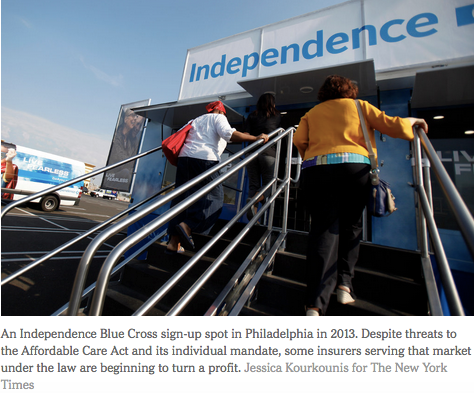Yet the continuing churn among insurers and the anxiety pervading the industry — stirred largely by President Trump’s predictions of collapse and threats to withhold critical government payments to insurers — have obscured an encouraging fact: Many of the remaining companies have sharply narrowed their losses, analysts say, and some are even beginning to prosper.
“Outside of the noise,” the surviving companies “are seeing a path forward in this marketplace,” said Deep Banerjee, an analyst with Standard & Poor’s who has examined the financial results of more than two dozen Blue Cross insurers.
“It is still a new market,” he added, “and everyone is adjusting to it.”
The healthier business outlook has been achieved at a big cost to consumers. To stanch their losses, many companies raised their prices substantially for this year while narrowing their networks of providers to hold down costs. In Phoenix, for example, a typical plan’s monthly premiums more than doubled. Although people with incomes low enough to qualify for federal subsidies were shielded from the brunt of the steep increases, the higher prices prompted Republicans to blame the law for plans that were out of many people’s reach.




